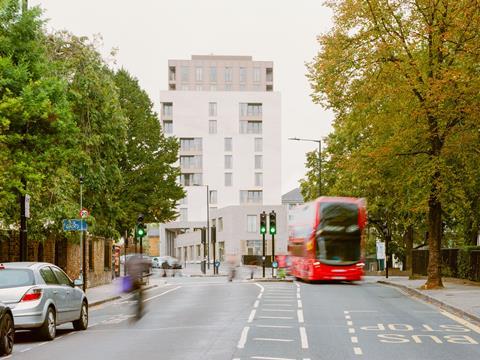The Centre for Ageing Better says 250,000 more accessible homes could have been built if the previous government had adopted the regulations

The Centre for Ageing Better has urged Labour to increase the minimum accessibility requirements for new-build homes to address the needs of 1.8 million people requiring accessible or adaptable housing.
Two years ago, Boris Johnson’s government announced that there would be a minimum requirement for all new homes to have entrance-level step-free access and “features to make homes more easily adaptable over time”.
However, a second round of consultation required to finalise the regulations did not take place, meaning the standards were not implemented.
New analysis conducted by the Building Research Establishment (BRE) on behalf of the Centre for Ageing Better indicates that 250,000 more people could now live in accessible and adaptable homes if the legislation requiring higher minimum standards in new-build homes had been delivered.
Since the announcement two years ago, the analysis shows that only 82,000 accessible and adaptable homes have been built, based on the industry average that just one in four new-build homes have a minimum level of accessibility.
At the current rate, the Centre for Ageing Better has said it would take 44 years to build sufficient homes to meet the existing needs of 1.8 million people in England who currently need an accessible or adaptable home.
The London Plan states that 90% of all new-build properties should meet the M4(2) standards for accessible and adaptable dwellings, while the remaining 10% should be designed to meet the M4(3) standards for wheelchair users.
The research reveals that if the whole of England had minimum accessibility standards similar to London, up to an additional 250,000 accessible and adaptable homes could have been built in the two years since the government announcement.
>> Also read: Mae’s multi-generational living scheme: A model for inclusive community housing
The current minimum standard for accessible housing in England includes four main requirements: level access to the main entrance, a flush threshold, wide doorways and circulation space, and a toilet at entrance level.

The proposed higher M4(2) standard, which would become the new minimum if previously recommended regulations were implemented, adds features such as a living area at entrance level, step-free access to all entrance level rooms and facilities, wider doorways and corridors, and clear access routes to reach windows.
The Housing Made for Everyone (HoME) coalition, chaired by the Centre for Ageing Better and Habinteg Housing Association, is calling on the new government to complete the formalities that would bring in minimum accessibility standards as soon as possible.
The HoME coalition is made up of nine charities and housing organisations, including the Centre for Ageing Better, Habinteg, Age UK, Disability Rights UK, the Housing Learning and Improvement Network, Royal Institute of British Architects, the National Housing Federation, the Chartered Institute of Housing, and the Town and Country Planning Association.
Dr Carole Easton OBE, chief executive at the Centre for Ageing Better, said: “The scale of the unmet demand for accessible new homes in this country, and the glacial rate we are currently building to meet that demand, is appalling. It is leaving nearly two million people with substantial barriers just to use their own home every day and putting their health at risk.
“Raising the standard of accessibility has the potential to change millions of lives. Homes with higher accessibility standards benefit everyone, particularly disabled people and older people, and disadvantage no one.
“At present, fewer than one in ten homes in England are suitable for older or disabled people to visit, never mind live in. The need for accessible homes is only going to grow significantly over the next 20 years as our population ages and at the current rate of building we have no chance of ever getting close to meeting the needs of everyone.”
>> Also read: Why we need an intergenerational approach to urban design and architecture
Christina McGill, director of social impact & external affairs at Habinteg Housing Association, said: “We’re glad that the new Government has set itself a challenging housing target. But to make the most of this commitment in a way that truly meets the practical, daily living needs of the population, it must implement the M4(2) accessible and adaptable dwelling standard as the regulatory baseline for all new homes. It requires just one further short consultation with industry stakeholders on implementation details.”
McGill added: “At Habinteg we hear all too often from new tenants about the struggles they’ve had in finding a suitable home. People tell us how ‘making do’ in an inaccessible place has impacted their physical and mental health and overall wellbeing.
“By taking swift action to ensure all new homes built in England meet the M4(2) standard, the Government could improve health and wellbeing outcomes, support better community and economic participation among Disabled and older people, and save millions in health and social care costs.”
>> Also read: Bringing dignity and joy to later living: Mae’s Daventry House project sets a whole new standard
















No comments yet